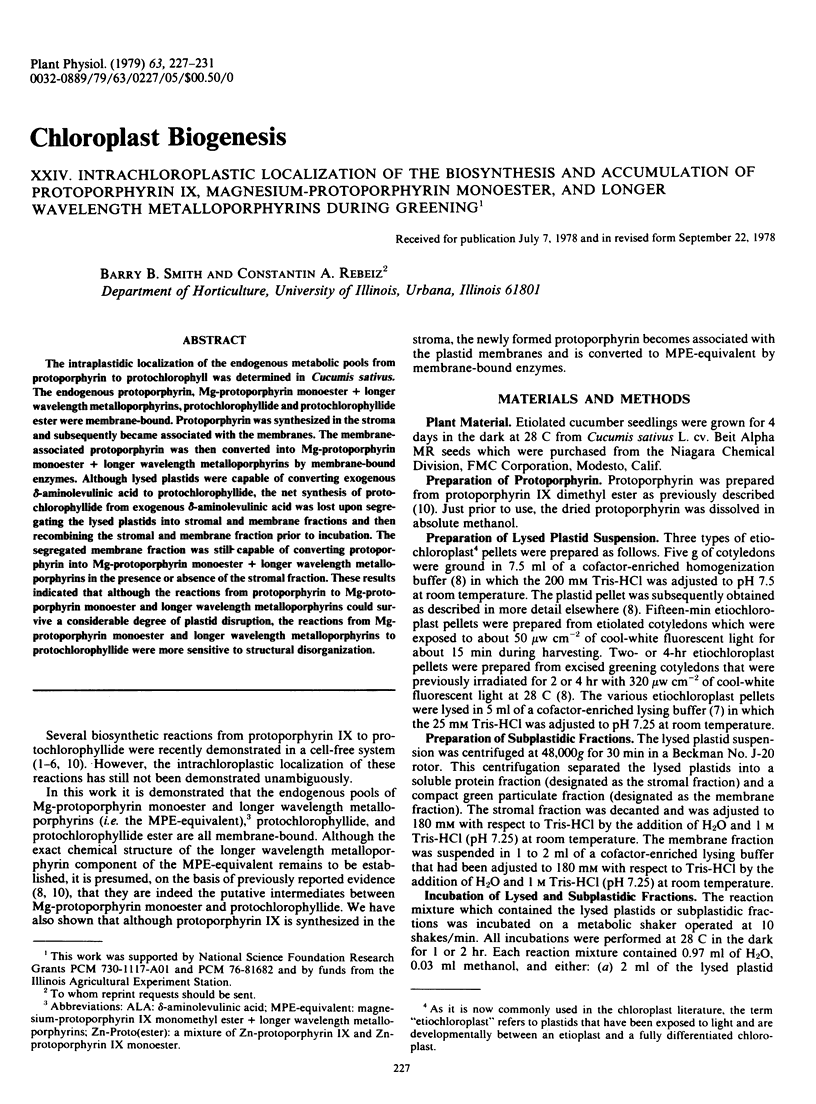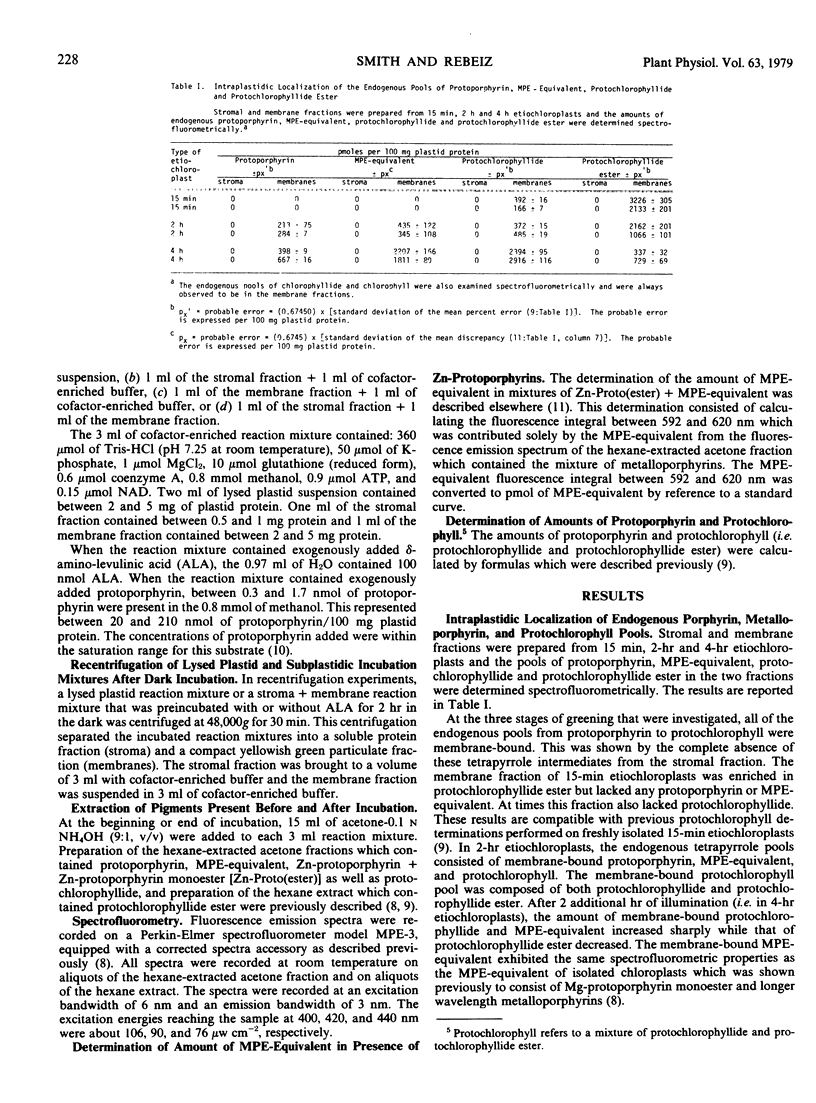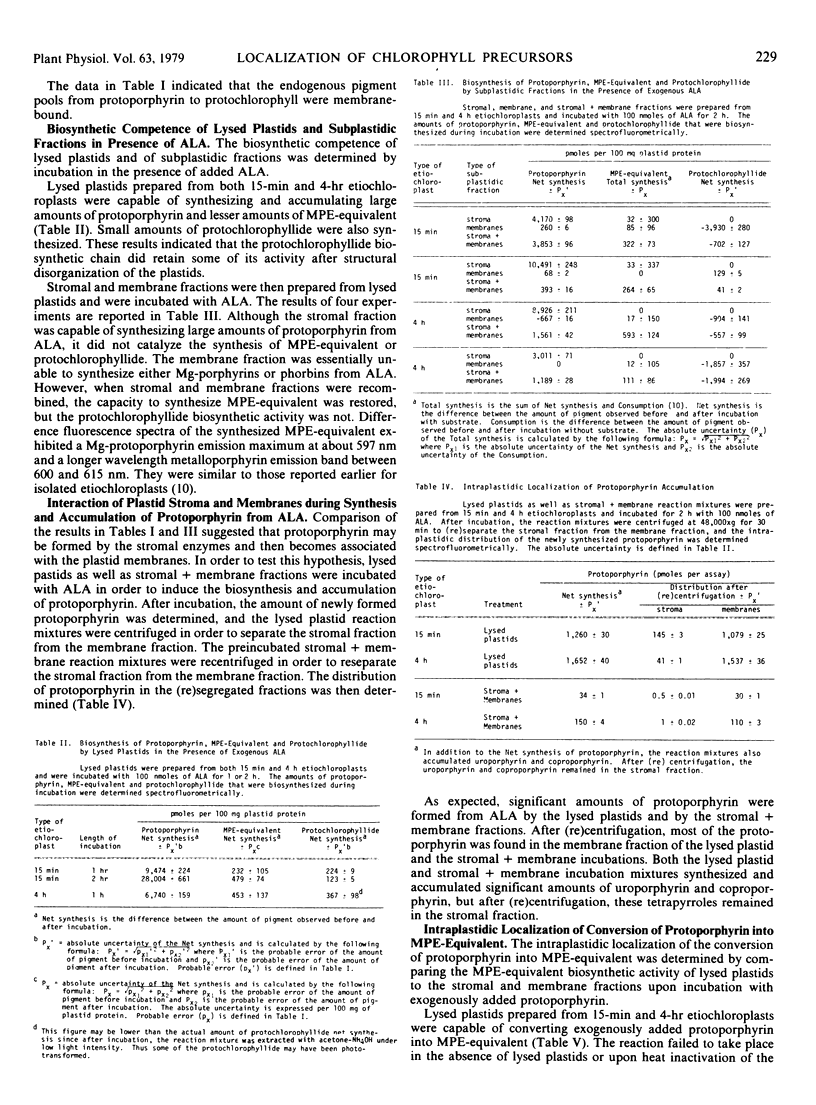Abstract
The intraplastidic localization of the endogenous metabolic pools from protoporphyrin to protochlorophyll was determined in Cucumis sativus. The endogenous protoporphyrin, Mg-protoporphyrin monoester + longer wavelength metalloporphyrins, protochlorophyllide and protochlorophyllide ester were membrane-bound. Protoporphyrin was synthesized in the stroma and subsequently became associated with the membranes. The membrane-associated protoporphyrin was then converted into Mg-protoporphyrin monoester + longer wavelength metalloporphyrins by membrane-bound enzymes. Although lysed plastids were capable of converting exogenous δ-aminolevulinic acid to protochlorophyllide, the net synthesis of protochlorophyllide from exogenous δ-aminolevulinic acid was lost upon segregating the lysed plastids into stromal and membrane fractions and then recombining the stromal and membrane fraction prior to incubation. The segregated membrane fraction was still capable of converting protoporphyrin into Mg-protoporphyrin monoester + longer wavelength metalloporphyrins in the presence or absence of the stromal fraction. These results indicated that although the reactions from protoporphyrin to Mg-protoporphyrin monoester and longer wavelength metalloporphyrins could survive a considerable degree of plastid disruption, the reactions from Mg-protoporphyrin monoester and longer wavelength metalloporphyrins to protochlorophyllide were more sensitive to structural disorganization.
Full text
PDF




Selected References
These references are in PubMed. This may not be the complete list of references from this article.
- Griffiths W. T. Protochlorophyll and protochlorophyllide as precursors for chlorophyll synthesis in vitro. FEBS Lett. 1974 Dec 15;49(2):196–200. doi: 10.1016/0014-5793(74)80510-7. [DOI] [PubMed] [Google Scholar]
- Mattheis J. R., Rebeiz C. A. Chloroplast biogenesis. Net synthesis of protochlorophyllide from magnesium-protoporphyrin monoester by developing chloroplasts. J Biol Chem. 1977 Jun 25;252(12):4022–4024. [PubMed] [Google Scholar]
- Mattheis J. R., Rebeiz C. A. Chloroplast biogenesis. Net synthesis of protochlorophyllide from protoporphyrin IX by developing chloroplasts. J Biol Chem. 1977 Dec 10;252(23):8347–8349. [PubMed] [Google Scholar]
- Rebeiz C. A., Crane J. C., Nishijima C. The biosynthesis of metal porphyrins by subchloroplastic fractions. Plant Physiol. 1972 Jul;50(1):185–186. doi: 10.1104/pp.50.1.185. [DOI] [PMC free article] [PubMed] [Google Scholar]
- Rebeiz C. A., Mattheis J. R., Smith B. B., Rebeiz C. C., Dayton D. F. Chloroplast biogenesis. Biosynthesis and accumulation of protochlorophyll by isolated etioplasts and developing chloroplasts. Arch Biochem Biophys. 1975 Dec;171(2):549–567. doi: 10.1016/0003-9861(75)90065-x. [DOI] [PubMed] [Google Scholar]
- Rebeiz C. A., Mattheis J. R., Smith B. B., Rebeiz C., Dayton D. F. Chloroplast biogenesis. Biosynthesis and accumulation of Mg-protoprophyrin IX monoester and longer wavelength metalloporphyrins by greening cotyledons. Arch Biochem Biophys. 1975 Feb;166(2):446–465. doi: 10.1016/0003-9861(75)90408-7. [DOI] [PubMed] [Google Scholar]
- Smith B. B., Rebeiz C. A. Chloroplast biogenesis: detection of Mg-protoporphyrin chelatase in vitro. Arch Biochem Biophys. 1977 Apr 15;180(1):178–185. doi: 10.1016/0003-9861(77)90023-6. [DOI] [PubMed] [Google Scholar]


